Introduction
Election campaigns once relied solely on posters, flyers, and other “traditional” methods, but now, LED displays have quietly taken center organiser.
Imagine walking down the street and suddenly seeing a large, gleaming screen. The candidates’ latest political platforms and event schedules flash across the screen, conveying information quickly and clearly.
Don’t underestimate it; LED screens are the “superstars” of election campaigns!
Table des matières
1. Why LED Screens Have Become the New Favorite of Election Campaigns
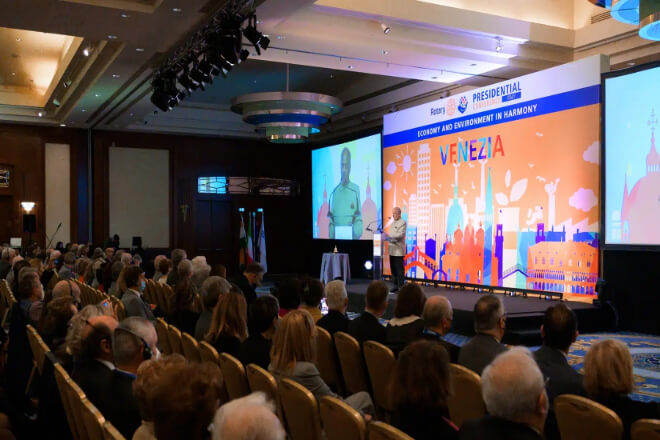
If you thought election campaigns relied solely on posters, flyers, and “traditional” methods, you might have missed out on this new era’s darling: LED screens!
Not only do they make a candidate’s “show” overnight, they’re also changing the way we access election information.
Imagine walking down the street and suddenly seeing a giant, gleaming LED screen displaying the candidates’ latest political platforms and event schedules.
See clearly, hear clearly, and understand the information at a glance. Don’t underestimate their glitz and glamour; LED screens are more than just for show; they’re the superstars of election campaigns!
First and foremost, the greatest advantage of LED displays is their visual impact!
Imagine walking down the street during the day and suddenly being captivated by a large, gleaming screen. The image is so clear that even pedestrians at the next intersection can clearly see it.
This effect far surpasses that of traditional posters. Especially at night, LED displays are like “stars” in the city, dazzling even in dimly lit environments, drawing voters at first sight.
Imagine the 2020 US election, with candidate information everywhere on the streets – you can’t help but stop and take a look. After all, who can resist such eye-catching propaganda?
LED displays are more than just wallflowers; they are active actors!
From city center streets to busy subway stations, even buses and mobile advertising vehicles, LED displays have found their place.
Like a walking propaganda elf, LED screens can spread a candidate’s message from one end of the city to the other.
Compared to traditional paper advertisements, which are restricted to fixed locations, the flexibility and wide reach of LED screens are unmatched!
For example, during Singapore’s election campaigns, candidate messages were displayed via LED screens in major centres commerciaux and subway stations, visible to nearly every passerby.
The moment you step out of your home, the candidate’s political platform is readily available—truly “anytime, anywhere.”
Election campaigns often require frequent adjustments to political platforms, event schedules, and countdowns, and candidates don’t want their information to be out of date.
Traditional posters and flyers can’t be updated in real time, but LED screens can—update them instantly!
If a candidate has a surprise event today, the LED screen can immediately display it, ensuring voters are informed first. Furthermore, this flexible content switching is not only efficient but also modern.
In some places, candidates will use LED screens to broadcast final promotional clips in the final days of the election countdown.
At this point, voters are treated to the candidates’ passionate speeches and inspiring promises, galvanizing their final push to vote. It’s like a movie trailer, leaving everyone eager to see the ending!
Imagine if your voters all spoke different languages. Would you hand out a translated brochure to each voter? Absolutely not!
However, LED screens easily solve this problem – they can simultaneously broadcast content in multiple languages, catering to voters from diverse language backgrounds.
Whether you speak English, Hindi, or another local language, LED screens can deliver candidate messages in a language you understand.
For example, in India, LED screens can simultaneously broadcast promotional content in Hindi, English, and other local languages, ensuring that voters of all ethnicities can seamlessly understand the candidates’ platforms and plans.
This allows candidates to communicate seamlessly across languages, ensuring every voter feels valued.
If you’re still using paper posters for your campaigns, it might be time to consider environmental considerations.
LED screens are not only reusable, reducing paper waste, but also minimize the safety hazards associated with poster posting.
LED screens are also safer to install, eliminating potential accidents during poster hanging.
Furthermore, LED screens consume less energy and are designed to be environmentally friendly.
They can achieve greater impact with less electricity, making election campaigns greener and meeting modern society’s environmental protection needs.
2. How LED screens enhance the effectiveness of election campaigns
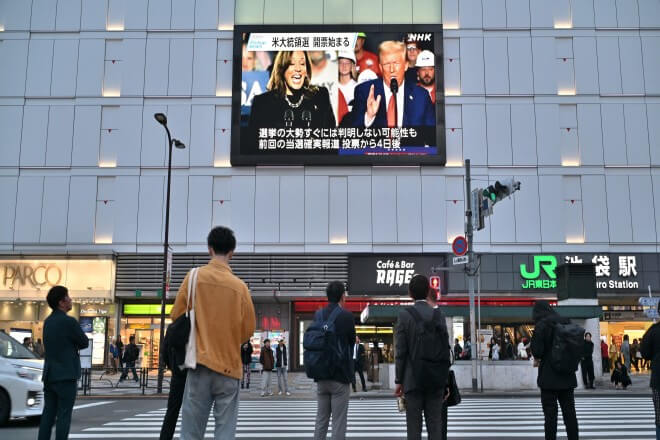
1) Dynamic images attract attention
Compared to traditional static posters, dynamic images undoubtedly attract voters more.
LED screens quickly capture the attention of passersby by showing vivid, dynamic videos, candidate speech clips, or exciting moments from election campaigns.
Furthermore, videos are more likely to attract people to stop and watch than static images, especially on busy streets or subway stations. The instantaneous visual impact can immediately pique passersby’s curiosity.
For example, in the UK election campaign, candidate promotional clips were shown on LED screens, allowing voters to personally explain the key policy points, achieving a far greater impact than a single poster.
2) Synchronized Audio and Subtitles
Another advantage of LED displays is their ability to synchronize audio and subtitles, providing a more diverse means of information delivery.
In addition to visual presentation, the combination of audio and subtitles can help voters more clearly understand candidates’ political views and key messages.
For example, in a local election in France, candidates’ campaigns relied not only on visuals to showcase their political views but also featured lively background music and clear subtitles, enhancing their appeal and retention.
This allowed voters to not only see the candidates’ images but also better hear their voices, further reinforcing the message.
3) Centralized Dissemination of Important Information
LED displays can efficiently and centrally display key election information, eliminating fragmented information and allowing voters to focus on the most important content at a glance.
For example, debate times, voting dates, and policy priorities can all be displayed uniformly on LED screens, saving voters time searching for information and improving the efficiency of information dissemination.
During the US presidential election, LED displays in multiple cities simultaneously broadcast the countdown to voting day and key candidate policies, ensuring voters clearly understand every important aspect.
This centralized presentation avoids fragmented and repetitive information, ensuring voters don’t miss any crucial moments.
4) Interactive Features
Interactive features are another highlight of LED screens. By displaying a QR code or link on the screen.
Voters can scan the QR code with their phones to participate in interactive activities, obtain more information about candidates, and even participate in Q&A sessions or polls.
In addition, many candidates use LED screens for live broadcasts, interacting with voters in real time and building a closer connection with them.
This interactivity significantly enhances voter engagement and loyalty, transforming elections from a one-way information exchange into a two-way communication.
For example, during the Canadian election, candidates broadcast live debates on LED screens and invited voters to cast their ballots or ask questions instantly via QR code links at the bottom of the screens, significantly boosting voter engagement.
5) 24/7 Communication
One of the greatest advantages of LED screens is their 24/7 operation. They can continuously display election information, day or night, ensuring that voters receive the latest content at all times.
This is crucial for election campaigns, especially in cities or transportation hubs with 24-hour traffic. LED screens ensure that voters have access to election information at all times.
For example, during Hong Kong’s election campaigns, candidates used LED screens at subway and bus stations to broadcast campaign announcements and policy statements around the clock, ensuring commuters could stay informed even during rush hour.
3. Specific Applications of Different Types of LED Screens in Elections
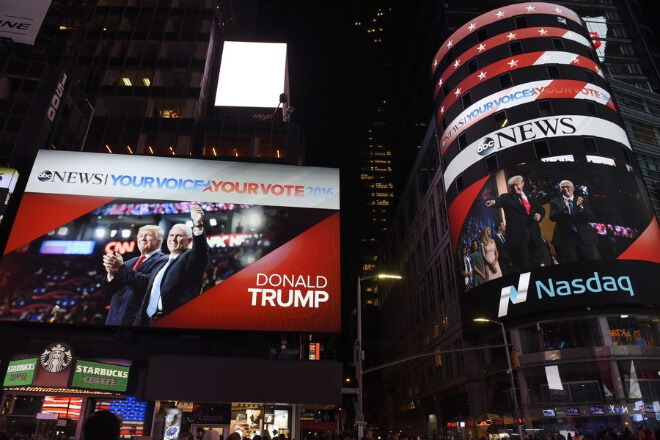
Large outdoor LED screens are often used as the “main stage” at rallies, especially at large election events.
For example, during the 2016 US presidential election, both Hillary Clinton and Donald Trump’s campaigns made extensive use of large outdoor LED screens.
Through these large screens, candidates can broadcast live speeches, policy briefings, and campaign announcements at rallies, attracting the attention of voters.
These large screens not only showcase candidates’ images and political platforms, but also play interactive videos with voters and countdowns to the election, creating a lively atmosphere.
Le haut luminosité and clarity of LED screens ensure clear transmission of information, day or night, allowing voters to experience the atmosphere of the election at any time and in any location.
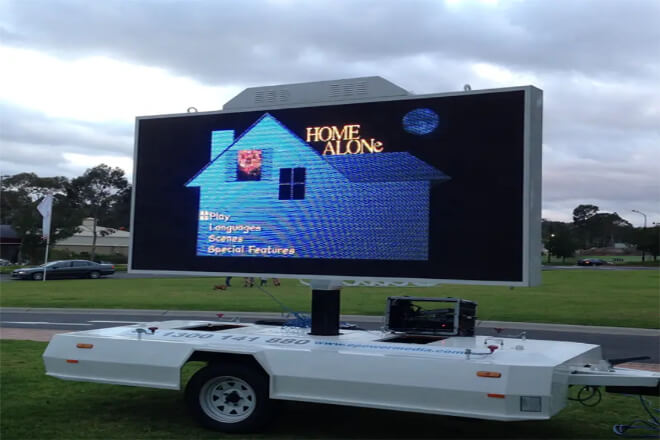
2) Truck-mounted Mobile LED Advertising Screens
Truck-mounted mobile LED advertising screens offer a highly mobile and wide-reaching campaign method.
In 2018, candidates in several US states used these mobile advertising vehicles during election campaigns.
With LED screens mounted on trucks, these vehicles can roam city streets, broadcasting candidates’ political platforms and campaign information in various neighborhoods and commercial areas.
Especially on election eve, mobile advertising vehicles rotate through busy intersections and neighborhoods, ensuring voters have timely access to the latest election information.
The advantage of this advertising method is that it’s not restricted to a fixed location; it can be deployed anywhere voters gather.
For example, during the 2018 California election, candidate teams used these mobile screens to promote their campaigns in various parts of the city, successfully reaching a large number of commuters and voters in low-income communities.
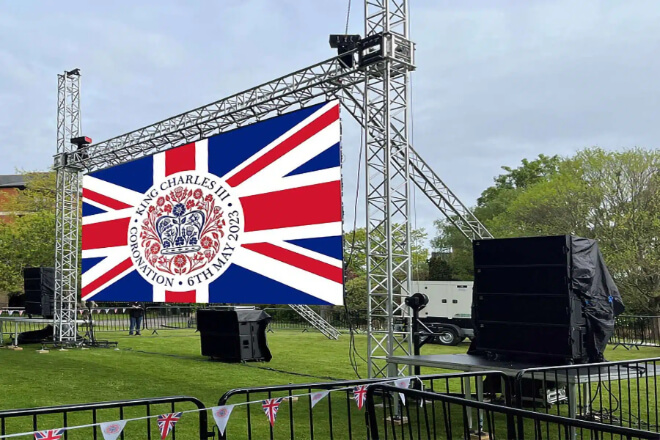
During election campaigns, renting LED stage screens is not only a tool for supporting speeches but also a crucial platform for candidates to interact with voters.
For example, during the 2017 French presidential election, candidate Emmanuel Macron’s campaign team used LED screens.
At rallies in Paris and other major cities, Macron used LED screens to broadcast his campaign speeches and policy proposals in real time.
They also displayed interactive videos and social media feedback from voters, significantly enhancing engagement at the campaign events.
The use of these screens not only allowed candidates to deliver their messages on-site but also connected with voters through visual and interactive means.
Voters not only saw the candidates’ images but also felt the atmosphere and enthusiasm of the event.
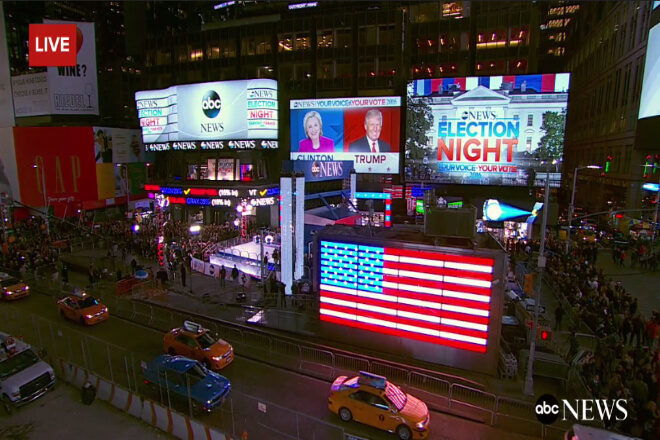
4) Screens in centres commerciaux and transportation hubs
Shopping malls and transportation hubs are among the most widely used areas for LED screens. These high-traffic areas are ideal for candidates to precisely target their messages.
During the 2018 German federal election, campaign teams for several candidates installed LED screens in major train and subway stations in Berlin, showcasing the candidates’ policy highlights and the countdown to the election for commuters.
Similarly, during the 2016 US presidential election, LED screens in several subway stations and commercial areas in New York City displayed campaign messages from both Trump and Hillary Clinton.
This targeted delivery ensures that candidate information reaches a large number of commuters and shoppers, increasing voter attention to the candidates.
5) Community Announcements and Gouvernement LED Screens
Community announcements and government LED screens are effective tools for candidates to strengthen local voter awareness.
For example, during the 2017 UK general election, candidate Justin Winston used community LED screens to deliver campaign information and policy content to voters.
These LED screens are often installed in residential areas or community centers, allowing candidates to directly interact with local voters.
On these community announcement screens, candidates can provide real-time updates on event schedules, policy priorities, and even display countdowns to the election, drawing voters’ attention to local election events.
Through this localized delivery, candidates can strengthen their connection with community voters and increase their participation in the election.
4. Choosing the Right LED Display Solution
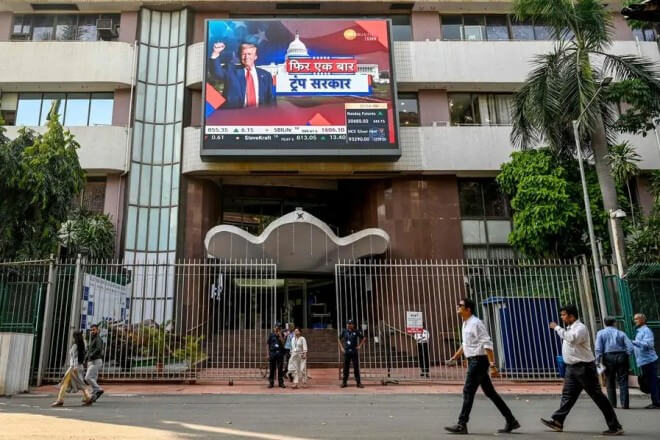
During election campaigns, selecting the right LED display solution is crucial for ensuring effective campaign messaging.
A good display not only allows candidates to convey their political messages more clearly and effectively but also enhances voter engagement and interaction.
However, with so many options available, how do you choose the most suitable LED display solution?
Below, we’ll analyze several key factors to help you choose the most suitable LED display solution.
1) Display Quality and Résolution Compatibility with Venue Size
First and foremost, the most important consideration is whether the display quality and resolution are compatible with the venue’s size.
For venues like large squares or stadiums, choosing a large, high-resolution screen is particularly important.
A large screen ensures that voters at a distance can clearly see the content on the screen, preventing blurry or unreadable information.
For example, during the 2016 US presidential election, the campaigns of Hillary Clinton and Donald Trump used high-resolution LED displays at large rallies.
For these large-scale events, lower resolutions can compromise the viewing experience, making it crucial to choose LED displays with high resolution and vibrant colors.
For smaller events or those in less crowded areas, a smaller display can be chosen, and the resolution can be adjusted down to save costs while still meeting demand.
2) Luminosité and waterproof/sunscreen ratings determine lifespan
Election campaigns often take place outdoors, so the brightness, waterproofness, and sunscreen resistance of LED displays are key considerations when choosing one.
Especially in outdoor environments, strong sunlight and fluctuating weather can significantly impact displays.
If the display’s brightness is insufficient, the image will be blurry under sunlight, losing its effectiveness.
For example, during the 2017 French presidential election, Emmanuel Macron’s team selected LED displays with high brightness and high waterproof/sunscreen ratings for outdoor events. This ensured a clear display both day and night.
In addition, choosing an LED screen with a high waterproof/sunscreen rating can extend its lifespan, preventing damage from rain or strong sunlight.
Thus, when selecting an LED display for outdoor use, ensure it has a brightness of at least 4,000-6,000 nits and a waterproof/sunscreen rating of IP65 or higher.
3) Easy-to-use control system with remote update support
The ease of operation of an LED display’s control system is crucial for efficient campaign management.
Especially in large-scale election campaigns, candidates frequently need to update their information, and the control system must be able to quickly and easily adjust content.
The ideal control system should be intuitive and easy to operate, even without specialized technical personnel.
For example, in the 2020 US election, the LED display control system used by candidate teams supported remote updates and operation.
This allowed team members to update the content on the screens at any time, such as posting the latest campaign updates or adjusting speaking schedules, regardless of their location, as long as they had an internet connection.
The remote control feature greatly improved work efficiency and eliminated the frustration of on-site personnel being unable to update information in a timely manner.
4) Quick installation and removal, suitable for short-term events
Many election campaigns are time-sensitive, making the installation and removal speed of LED displays crucial.
For events lasting only a few days or weeks, LED displays that can be quickly installed and removed are more convenient and efficient.
Modular LED screens can simplify the installation process, allowing even non-professionals to complete the installation and removal process in a short period of time.
For example, during the 2017 German general election, some candidate teams used modular LED screens that could be quickly disassembled and reassembled after the event.
This was very helpful for saving time, reducing costs, and improving event efficiency.
5) Leasing vs. Buying
Ultimately, the decision to rent or buy LED screens depends on the budget and frequency of use for the event.
If the campaign is only held during a specific period and demand is high, renting may be a more suitable option.
The advantage of renting LED screens is that it avoids the high cost of purchase and long-term maintenance, and allows users to choose the appropriate screen size and features for each event.
However, if the campaign is frequent or if LED screens are planned for long-term use, buying may be more cost-effective.
By buying, campaign teams own their own equipment without being restricted by rental periods, allowing them to mobilize resources as needed.
For example, in the 2016 US presidential election, Trump’s team chose to rent multiple large LED screens for their rallies, avoiding the high cost of purchasing equipment.
Some political parties with long-term campaign participation choose to purchase their own LED screens for use in future campaigns.
5. The Added Value of LED Displays in Election Campaigns
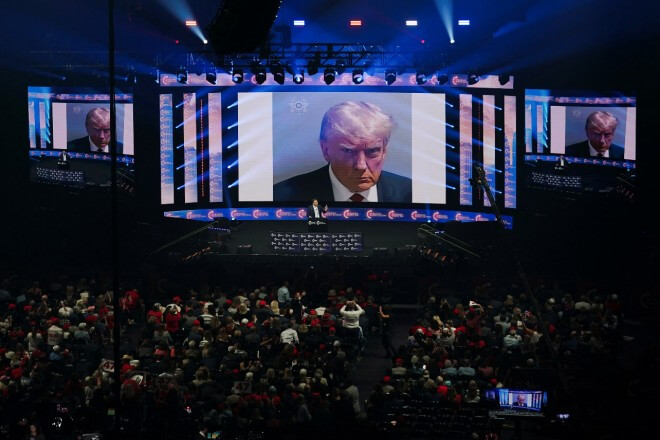
1) Brand Building
LED displays can help candidates project a more modern and professional image. A candidate’s image is crucial in an election campaign, and LED displays are a valuable asset.
By displaying high-quality videos, images, and policy pitches on large screens, voters perceive candidates as both competent and up-to-date.
For example, during the 2016 US presidential election, both Hillary Clinton and Donald Trump’s campaigns used large LED screens to broadcast candidate profile videos and platform presentations at rallies.
The large screens made them appear more professional and modern, and voters, seeing these high-tech presentations, were more likely to build trust in the candidates.
2) Increased Public Participation
The interactivity of LED displays fosters greater voter engagement.
Candidates can not only present their platforms on the screens, but also interact with them through real-time voting and Q&A sessions, truly ensuring a high sense of voter participation.
Just imagine: voters can vote and ask questions using QR codes, and candidates respond via LED screens.
This interactive approach brings candidates and voters closer together. For example, during the 2020 US presidential election, some candidates used LED screens for live broadcasts.
Voters could participate by using QR codes on the screens, asking questions, or making comments. Candidates could even answer voters’ questions in real time.
This approach not only enhanced voter participation but also made the election more engaging and interactive.
3) Support for Multiple Scenario Reuse
Another major advantage of LED screens is their versatility. After the election, the screens don’t need to be idle.
They can be used for public welfare promotion, government information dissemination, and other purposes, maximizing the value of the equipment.
After the 2017 French presidential election, Macron’s team used some of the LED screens used in campaigns for public welfare promotion, environmental protection projects, and cultural events.
This way, the screens not only played a role during the election, but also helped promote social responsibility and public welfare projects afterward, demonstrating the candidates’ comprehensive care.
4) Capable of Counting Playback Data
LED screens not only play content but also collect data!
Election teams can use the LED screen’s control system to collect statistics such as the number of viewers and frequency of interaction, helping to evaluate campaign effectiveness and return on investment (ROI).
This not only allows candidates to understand their most popular content but also helps them understand voters’ interests and concerns, allowing them to adjust their subsequent campaign strategies.
For example, during the 2018 Indian general election, some candidate teams used LED screens with data-driven analytics to monitor ad playback in real time.
By analyzing playback data, teams were able to more precisely adjust campaign content and advertising strategies, ensuring every budget was spent effectively and improving the overall effectiveness of their campaigns.
6. Conclusion
In summary, LED screens play more than just a decorative element in elections; they serve as “super ambassadors” for information dissemination and a bridge for voter interaction.
With dynamic imagery and real-time updates, LED screens not only quickly capture voters’ attention but also imbue election campaigns with a modern and dynamic feel.
From dazzling displays on the streets to interactive displays at rallies, LED screens can deliver unprecedented communication impact for candidates.
Enfin, pour plus d’informations sur les écrans LED, veuillez nous contacter.
